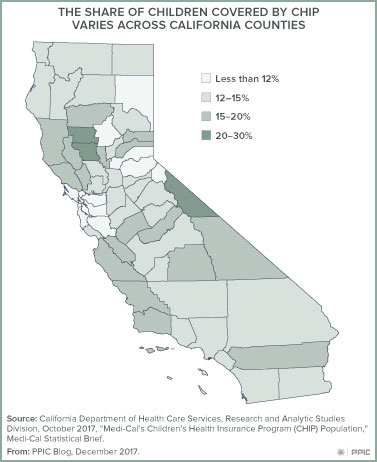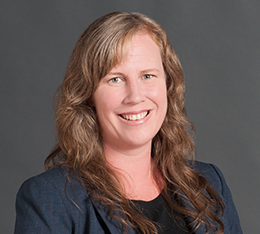Some 1.3 million Californians age 18 and under—about 13% of the state’s children—rely on the Children’s Health Insurance Program (CHIP) for their health coverage. Federal funding for CHIP expired on September 30 when Congress failed to reauthorize the program. While both the House and Senate have proposed bills that would reauthorize and fund the program for another five years, other legislative priorities and a deep partisan divide have complicated their passage.
In the last few months, some states, including California, have received additional CHIP funding from the federal government to maintain their current programs. But according to the state’s Legislative Analyst’s Office, California will likely run out of CHIP funds by the end of the year in the absence of federal reauthorization.
 As of May 2017, a quarter of the more than 5.2 million California children covered by Medi-Cal (the state’s Medicaid program) are funded through CHIP. More than 300,000 children in Los Angeles County, over 100,000 children in Orange County, and another 100,000 in San Diego County rely on the program. In a few small counties (such as Glenn, Colusa, and Mono) more than 20% of children are covered under CHIP (see figure). Some counties in the Central Valley (Merced, Madera, and Tulare) and the Central Coast have 15– 20% of children covered by CHIP, while most Bay Area counties have relatively low shares (less than 12%).
As of May 2017, a quarter of the more than 5.2 million California children covered by Medi-Cal (the state’s Medicaid program) are funded through CHIP. More than 300,000 children in Los Angeles County, over 100,000 children in Orange County, and another 100,000 in San Diego County rely on the program. In a few small counties (such as Glenn, Colusa, and Mono) more than 20% of children are covered under CHIP (see figure). Some counties in the Central Valley (Merced, Madera, and Tulare) and the Central Coast have 15– 20% of children covered by CHIP, while most Bay Area counties have relatively low shares (less than 12%).
Created in 1997 by federal legislation, CHIP provides federal matching funds to states to insure children with family incomes too high to qualify for Medicaid but too low to afford private insurance. In 1998, California established a new program under CHIP called the Healthy Families program, which covered children with family incomes above the Medicaid eligibility threshold and below 250% of the federal poverty level. In 2013, the state transitioned children from the Healthy Families program into Medi-Cal. Under current state law, children with family incomes up to 266% of the federal poverty level (about $65,500 for a family of four) are eligible for Medi-Cal coverage.
Under the Affordable Care Act, states received an enhanced federal matching rate for their CHIP programs that started October 1, 2015 and was supposed to extend until September 30, 2019. California’s enhanced federal matching rate increased the share of CHIP costs covered by the federal government from 65% to 88%. According to Medi-Cal estimates for the 2016–17 state fiscal year, the CHIP component of Medi-Cal cost about $2.6 billion, with federal funds covering about $2.3 billion.
The 2017–18 enacted state budget assumed California’s CHIP matching rate would drop back to 65%, resulting in increased state General Fund spending of about $400 million. While congressional proposals currently under consideration maintain the enhanced federal matching rate through 2019, it remains uncertain how the federal reauthorization process may play out and what impacts that could have on California’s CHIP funding.


